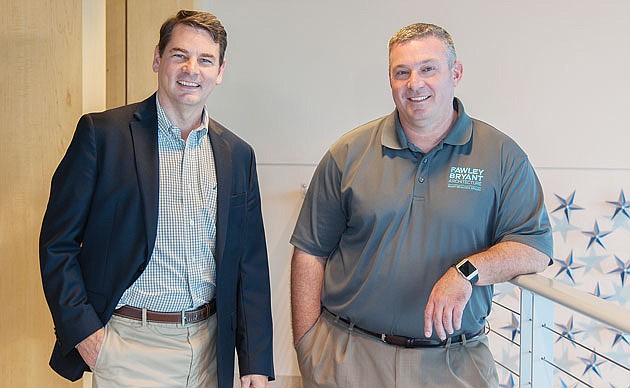- November 24, 2024
-
-
Loading

Loading

An ownership transition at Fawley Bryant has been in the works for years.
But proving that business succession is a work in progress that requires regular attention and care, in any industry, the transition at the Lakewood Ranch architecture firm has pockets of anxious moments. “The most difficult part,” says Steve Padgett, now principal and managing partner of the firm, “is you don't know what you don't know.”
One of the largest independently owned architecture and planning firms in the Sarasota-Bradenton region, Fawley Bryant had $6.6 million in revenue in 2017, up 46.6% from $4.5 million 2016. The 20-employee firm's clients include IMG Academy in Bradenton; country clubs and clubhouses across the region; and multiple schools and colleges.
For Padgett, 43, and new co-owner Stu Henderson, 45, the succession is the apex of what each has worked toward for two decades. They are now the only equity partners at the firm, founded by Mike Bryant and Rick Fawley in 1994.
Bryant, 63, is retired. Fawley died in September 2015, when he was 65, after a minor illness. Fawley's unexpected death didn't necessarily speed up succession at Fawley Bryant, say executives, but it did re-cement the need for it for Bryant.
“I have the utmost confidence in Steve and Stu,” Bryant says. “They have essentially been running the firm for the last year.”
The official ownership transition took place Dec. 6. It was the culmination of an exit strategy that began, at least in casual chats, in 2008. That's when Fawley and Bryant approached Padgett, who has been with the company since 2001, about taking on more leadership roles. Henderson joined the company in 2011, and was also put in leadership spots on projects. By 2013, the succession strategy started to become more formalized.
The company waited until after the 2017 holidays to publicize the moves. That was partially so it didn't get lost in the season, and partially because all the players wanted the switch to be easy and seamless. “The transition has been minimal for the staff and clients,” Henderson says. “That was strategic, to be nondisruptive.”
The strategy for the next version of Fawley Bryant is to disrupt a little, says the new owners, but be careful not to blow up the culture to chase new projects and new markets. One area of disruption is to continue to utilize high-end technology tools, such as virtual reality and 3-D visuals, to give clients more of a touch-it, feel-it sense of the project. The company recently invested about $150,000 on technology and infrastructure.
Fawley Bryant also recently reopened its downtown Bradenton office. It hired Shannon Barrier, an architect with 13 years of experience, most recently in Mississippi, to run the office. Barrier is one of five recent hires at the firm.
Even with new technology and reopened office space, the firm's niche will remain the same: to create innovative and practical uses of space for clients. That client roster is diverse, on purpose, with an eye toward the eventual next economic downturn.
“Just because there are new owners, doesn't mean there will be big changes,” says Padgett. “We don't have to get to 50 people, or even 30 people. Growth is about making sure the product is getting better.”
Bryant, meanwhile, who has talked openly about how deeply Fawley's death weighed on him, seeks to get an “A” in retirement. He and his wife, Evelyn, have varied interests in arts and culture — she in clay, he in native culture and archeology — and they're considering a move to Santa Fe, N.M. They also plan to travel, including to Europe, go hiking and skiing and spend time with their two teenage grandchildren. One specific upcoming goal: Run the Glacier National Park half marathon in June.
Fawley Bryant Architecture
Year Revenue Growth
2015 $4.2 million
2016 $4.5 million 7.14%
2017 $6.6 million 46.6%
Source: Fawley Bryant Architecture